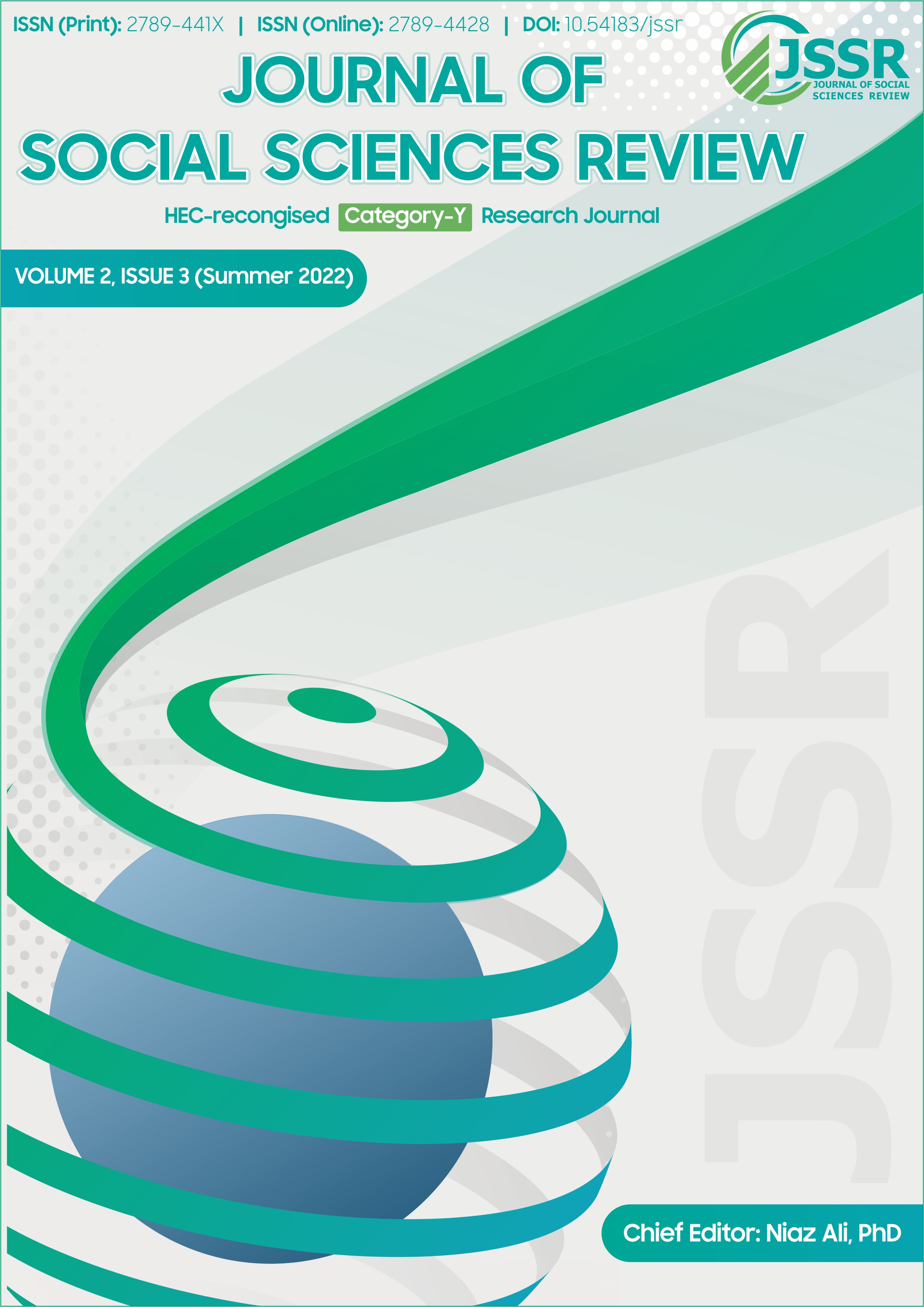Designing Textbook for English Language Learning at Primary Level: An Analysis
DOI:
https://doi.org/10.54183/jssr.v2i3.147Keywords:
Textbook, Education, Evaluation, Evaluative Checklist, Khyber PakhtunkhwaAbstract
The study aimed to evaluate the textbook of Khyber Pakhtunkhwa at the primary level in comparison to Oxford Modern English Textbook and Cambridge Scholar Standard series Pakistan. The objectives of the study are: (1) to illustrate the importance of textbooks in English language learning at the primary level, (2) to analyze the English textbooks used at the primary level, and (3) to propose/suggest parameters for designing English textbooks for effective English language learning at primary level. The researchers adopted a 75- items evaluative checklist presented by McGrath (2002). This checklist has been selected by the researchers because it fulfils the requirement of the study. The findings show that the English textbook of Khyber Pakhtunkhwa fails to achieve the desired objectives of the English language curriculum. On the basis of the research findings, the researcher concluded that the current English textbook of Khyber Pakhtunkhwa needs to be re-designed in order to address the needs of the primary level students.
References
Alkin, M. C. (1973). Evaluating "Curriculum" and "Instruction". Curriculum Theory Network, 4(1), 43. https://doi.org/10.2307/1179129
Awasthi, J. R. (2010). Teacher education with special reference to English language teaching in Nepal. Journal of NELTA, 8(1). https://doi.org/10.3126/nelta.v8i1.3377
Butler, J. (2004). Detention illimitée. Vacarme, 29(4), 124. https://doi.org/10.3917/vaca.029.0124
Cakir, F., Uckan, E., Shen, J., Seker, S., & Akbas, B. (2015). Seismic performance evaluation of slender masonry towers: A case study. The Structural Design of Tall and Special Buildings, 25(4), 193-212. https://doi.org/10.1002/tal.1235
Cronbach, L. J. (1975). "Five decades of public controversy over mental testing": Reply. American Psychologist, 30(9), 938-939. https://doi.org/10.1037/0003-066x.30.9.938
Cunningsworth, A., & Kuse, P. (1991). Evaluating teachers' guides. ELT Journal, 45(2), 128-139. https://doi.org/10.1093/elt/45.2.128
Davis, A. R. (1995). Languishing languages. Science News, 148(5), 67. https://doi.org/10.2307/3979312
Krashen, S. D. (1982). Acquiring a second language. World Englishes, 1(3), 97-101. https://doi.org/10.1111/j.1467-971x.1982.tb00476.x
Major, R. C. (2004). Gender and stylistic variation in second language phonology. Language Variation and Change, 16(03). https://doi.org/10.1017/s0954394504163059
Mehrotra, V., & Awasti, G. (2009). S.53. Immunological study in patients of pemphigus vulgaris. Clinical Immunology, 131, S147. https://doi.org/10.1016/j.clim.2009.03.434
Porter, P. A., McDonough, J., & Shaw, C. (1995). Materials and methods in ELT: A teacher's guide. The Modern Language Journal, 79(2), 279. https://doi.org/10.2307/329642
Tomlinson, B., & Dat, B. (2004). The contributions of Vietnamese learners of English to ELT methodology. Language Teaching Research, 8(2), 199-222. https://doi.org/10.1191/1362168804lr140oa
Wen-Cheng, W., Chien-Hung, L., & Chung-Chieh, L. (2011). Thinking of the textbook in the ESL/EFL classroom. English Language Teaching, 4(2), 91. https://doi.org/10.5539/elt.v4n2p91
Zhang, W., & Creswell, J. (2013). The use of the “Mixing” procedure of mixed methods in health services research. Medical Care, 51(8), e51-e57. https://doi.org/10.1097/mlr.0b013e31824642fd
Downloads
Published
Issue
Section
License
Copyright (c) 2022 Copyright in the Journal of Social Sciences Review is retained by the author(s). Authors also grant any third party the right to use the article freely as long as its integrity is maintained and its original authors, citation details and publisher are identified.

This work is licensed under a Creative Commons Attribution-NonCommercial 4.0 International License.
SSR's Editorial Board shares the vision of providing free access to information, education, and science for everyone, thus promoting its content through an OPEN ACCESS POLICY, fulfilling the DOAJ definition of open access. The JSSR adheres to an Open Access and Copyright Licensing Policy based on the belief that making research freely accessible to the public promotes greater global knowledge sharing.
The JSSR uses the Creative Commons Attribution-NonCommercial 4.0 International License. The authors who apply and publish in JSSR consent to abide by the copyright policy set out in the Creative Commons 4.0 license (Attribution-NonCommercial 4.0 International license).
- Copyright in the Journal of Social Sciences Review is retained by the author(s).
- Authors also grant any third party the right to use the article freely as long as its integrity is maintained and its original authors, citation details and publisher are identified.
While "By 'open access' to this literature, we mean its free availability on the public internet, permitting any users to read, download, copy, distribute, print, search, or link to the full texts of these articles, crawl them for indexing, pass them as data to software, or use them for any other lawful purpose, without financial, legal, or technical barriers other than those inseparable from gaining access to the internet itself."



